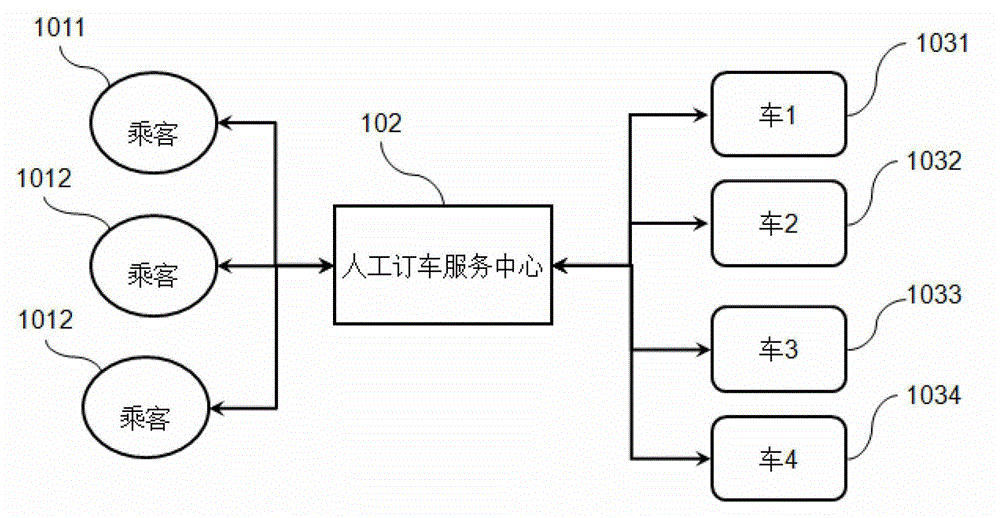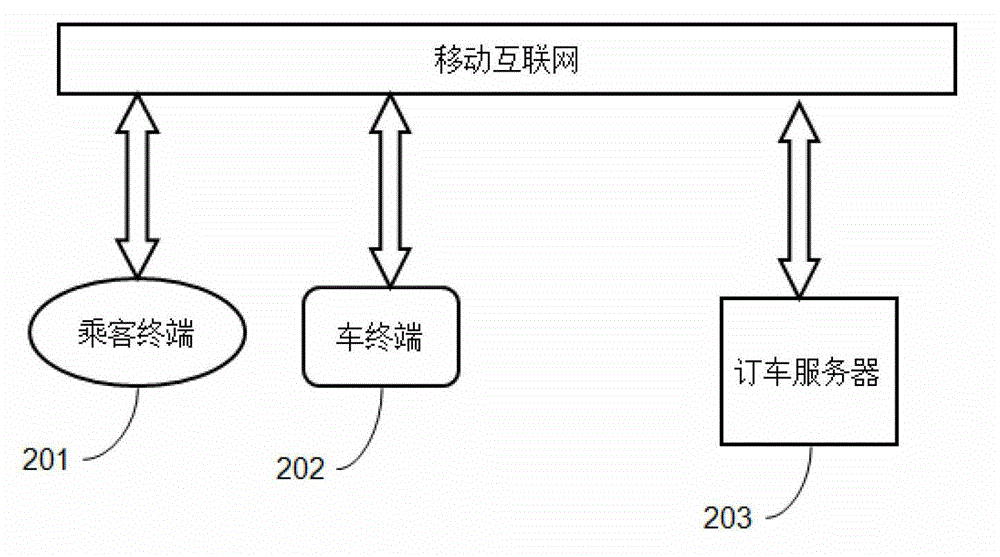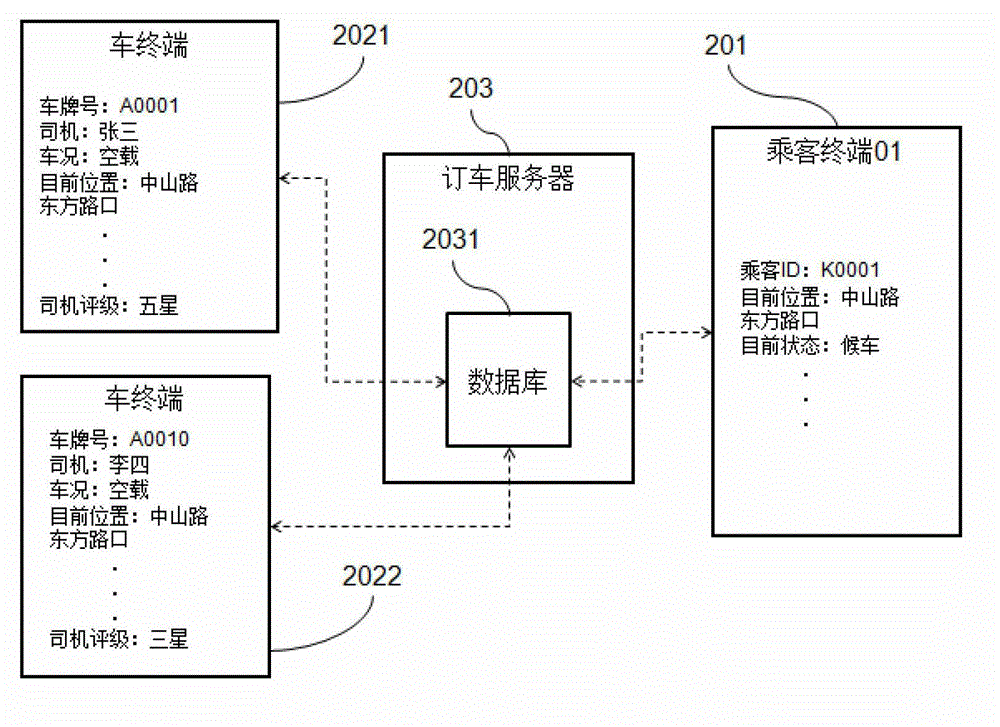Taxi hiring system and taxi hiring method
A technology for car booking and ordering, applied in the field of taxi booking system, can solve problems such as aggravating traffic congestion, information asymmetry, and impediment, and achieve the effect of improving enthusiasm, reducing labor costs, and reducing delays
- Summary
- Abstract
- Description
- Claims
- Application Information
AI Technical Summary
Problems solved by technology
Method used
Image
Examples
Embodiment Construction
[0031] In order to make the object, technical solution and advantages of the present invention clearer, the present invention will be described in detail below in conjunction with the accompanying drawings and specific embodiments.
[0032] figure 2 It is an architecture diagram of the car ordering system of the present invention. The car ordering system of the present invention comprises passenger terminal 201, car terminal 202 and car order server 203, wherein, passenger terminal 201 and car terminal 202 install client application program and log in order car server 203 by mobile wireless network. In the vehicle system, the passenger terminal 201 and the vehicle terminal 202 are intelligent wireless communication terminals, such as smart phones commonly used in the market, palmtop computers and tablet computers supporting mobile communication, etc. These intelligent wireless communication terminals support 3G or 4G mobile network operating systems , such as Apple's iOS sys...
PUM
 Login to View More
Login to View More Abstract
Description
Claims
Application Information
 Login to View More
Login to View More - R&D
- Intellectual Property
- Life Sciences
- Materials
- Tech Scout
- Unparalleled Data Quality
- Higher Quality Content
- 60% Fewer Hallucinations
Browse by: Latest US Patents, China's latest patents, Technical Efficacy Thesaurus, Application Domain, Technology Topic, Popular Technical Reports.
© 2025 PatSnap. All rights reserved.Legal|Privacy policy|Modern Slavery Act Transparency Statement|Sitemap|About US| Contact US: help@patsnap.com



